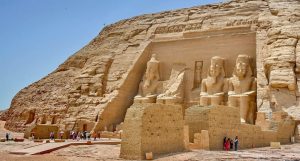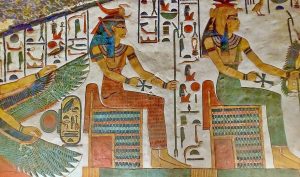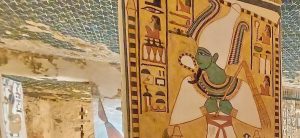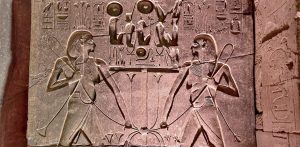Who is Queen Hatshepsut?
Queen Hatshepsut, whose name means “Foremost of Noble Women,” was the fifth pharaoh of the 18th dynasty and one of ancient Egypt’s most powerful monarchs. Hatshepsut, the eldest daughter of King Thutmose I and his wife Queen Ahmose, was born in 1508 BC. Her grandpa, King Ahmose, was her grandfather. Despite the ancient Egyptians’ opposition to women governing, she governed alongside her father and learned a great deal from him, which explains why she became one of the most effective rulers in Egyptian history.
How Did She Obtain Egypt’s Throne?
The reign of Queen Hatshepsut began in 1492 BC when she married her half-brother Thutmose II, the son of Thutmose I by a minor bride called Mutnofret. Hatshepsut governed Egypt in the name of the King as his wife since he was a man of low character and health. Hatshepsut and her husband Thutmose II Neferu-Ra had only one daughter. Hatshepsut was promoted to God’s Wife of Amun, the second-highest status for a woman in ancient Egypt after Queen. After Thutmose II’s death, the Egyptians rejected the concept of a woman leading them as a Queen, so they appointed Thutmose III, who was only two years old at the time, the king, and Hatshepsut reigned as regent to her step-son. Thutmose III was the son of Thutmose II and Isis, Thutmose II’s minor wife. Hatshepsut had powerful allies, notably Senenmut, her chief minister, who assisted her in becoming the genuine pharaoh with all the powers of a king. She ordered that she be shown with a beard and muscles, as well as conventional feminine trappings.
Queen Hatshepsut’s Rule in Egypt
Queen Hatshepsut’s reign was prosperous and peaceful, as she established friendships with neighboring countries through trade. She dispatched many seaborne trading expeditions to the kingdom of Punt and the Atlantic Ocean, returning with gold, baboons, myrrh, ebony, wild animals, and other treasures. She also launched many military operations in Syria and Nubia. While she oversaw the affairs of the kingdom, she made her step-son Thutmose III a commander in numerous wars, safeguarding the country and expanding the Egyptian empire. She married him to her daughter Neferu-Ra, who was granted the title of God’s Wife of Amun.
Queen Hatshepsut’s Works

Like all the great Egyptian Pharaohs, Queen Hatshepsut tried to immortalize her legacy by erecting a variety of spectacular structures. She commissioned the construction of a temple at Deir El-Bahri, which is regarded as one of the world’s most magnificent temples and was planned by her chief minister Senenmut. Hatshepsut’s temple is a stunning example of ancient Egyptian classical architecture, with really magnificent sculptures and artwork. The temple is dedicated to the gods, particularly the creator deity Amun. She ordered the construction of the majority of the obelisks at El-Karnak Temple, as well as remodeling her father’s hypostyle hall and adding two obelisks. The magnificent incomplete obelisk was commissioned by the building and revealed a lot about the construction practices of the time.
Hatshepsut’s Death: How Did She Pass Away?
She died around 1458 BC, when she was in her mid-40s, of an abscess caused by tooth extraction, as well as diabetes and bone cancer in her final days. She enlarges her father’s tomb so that they might be buried in the Valley of the Kings with him. If you want to visit Egypt and see all of these archaeological sites in lower and upper Egypt, as well as learn more about ancient Egyptian civilization, check out our finest Egypt tour packages and Nile river cruises and plan your unforgettable trip.






